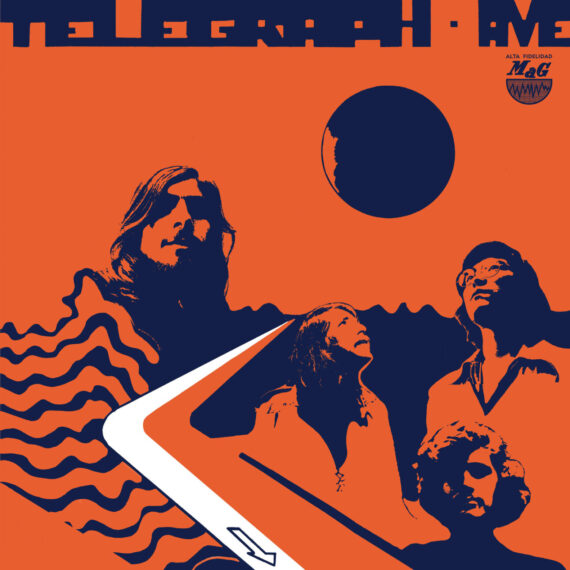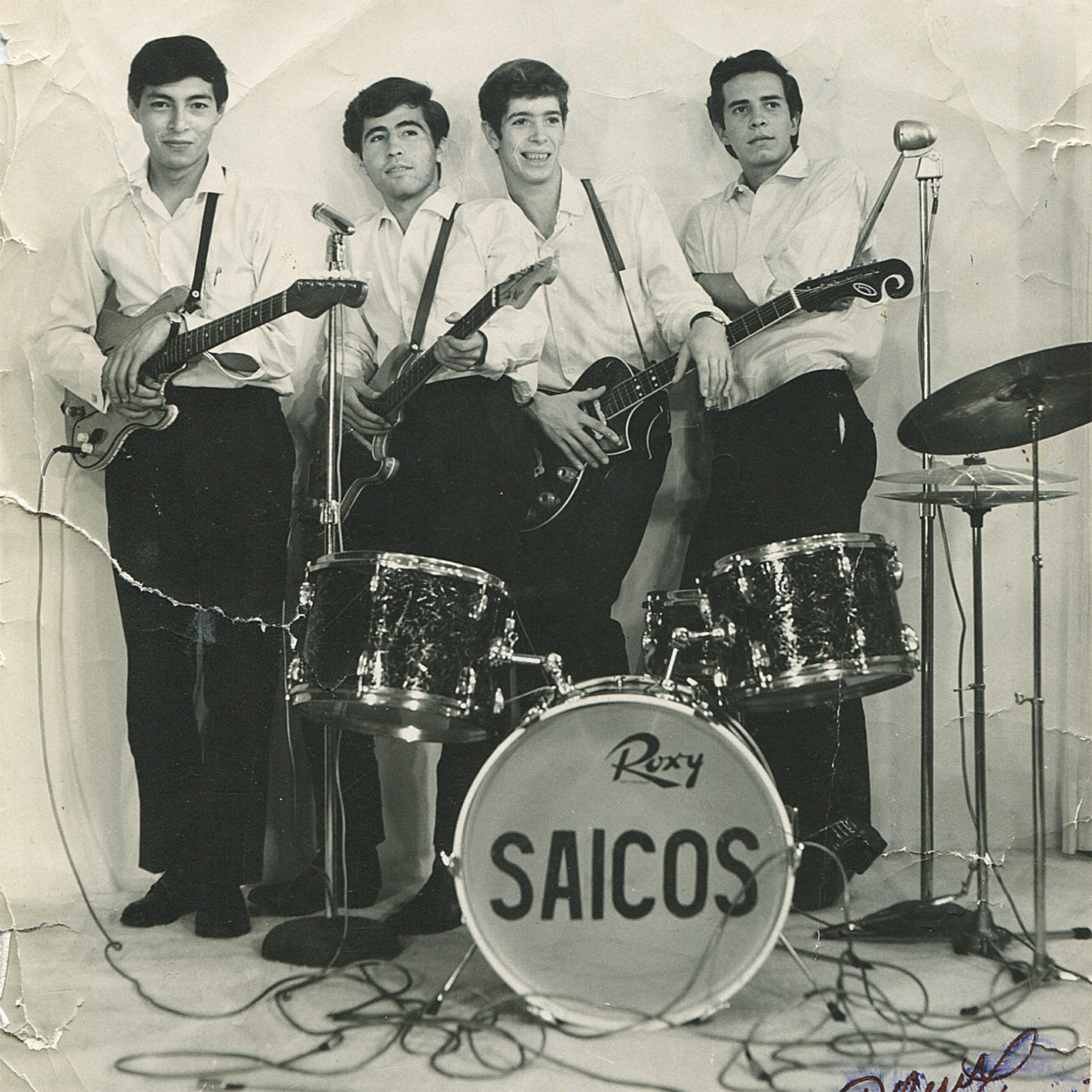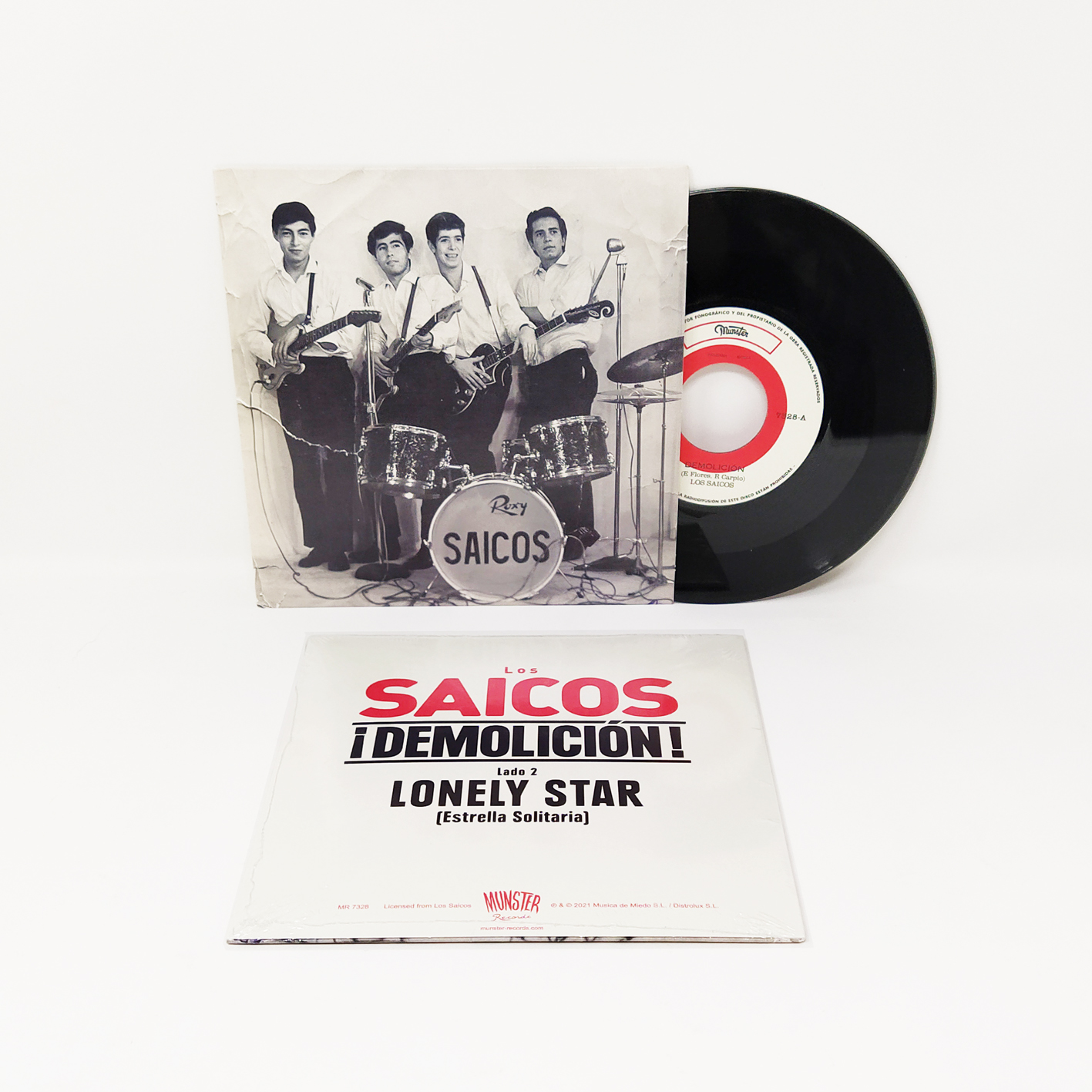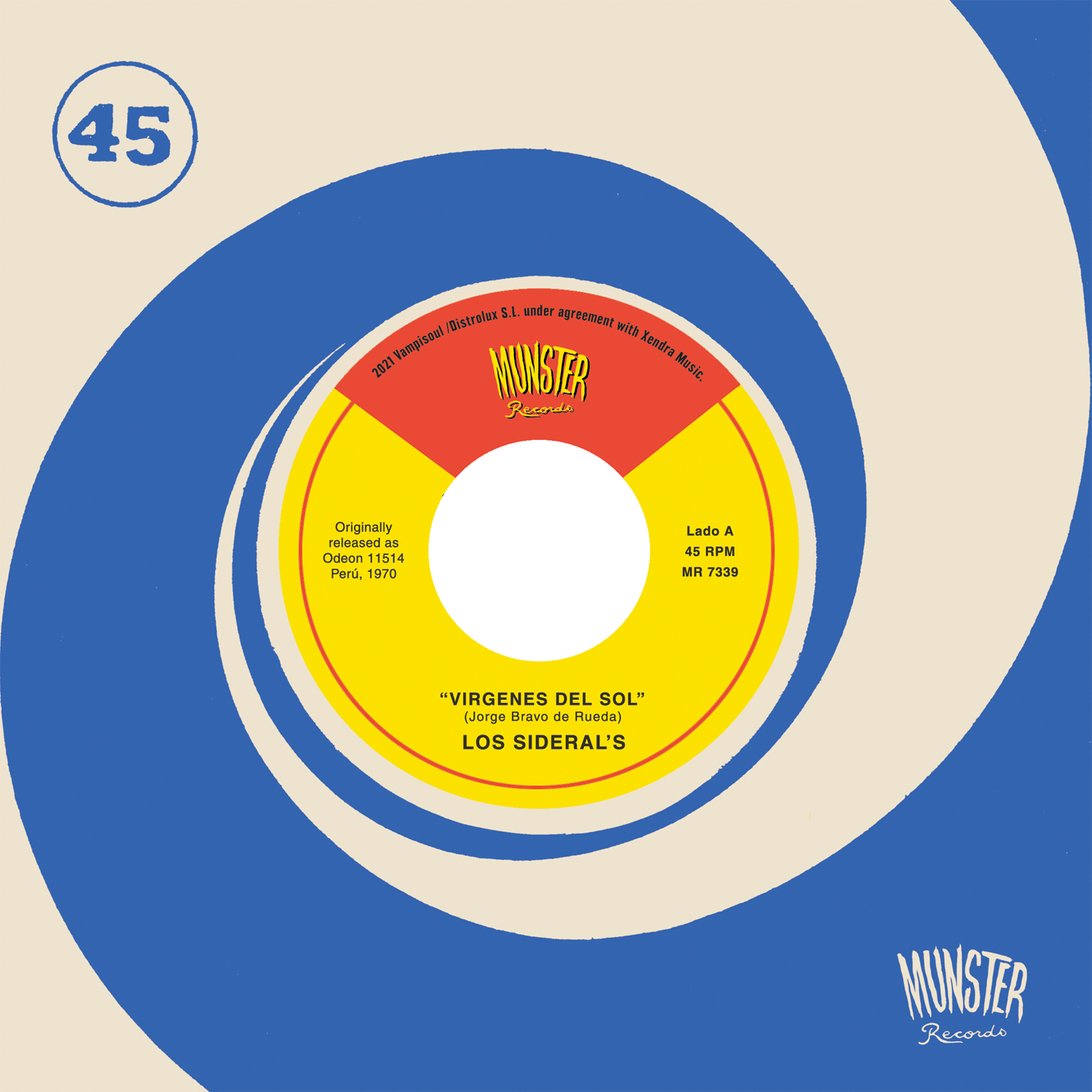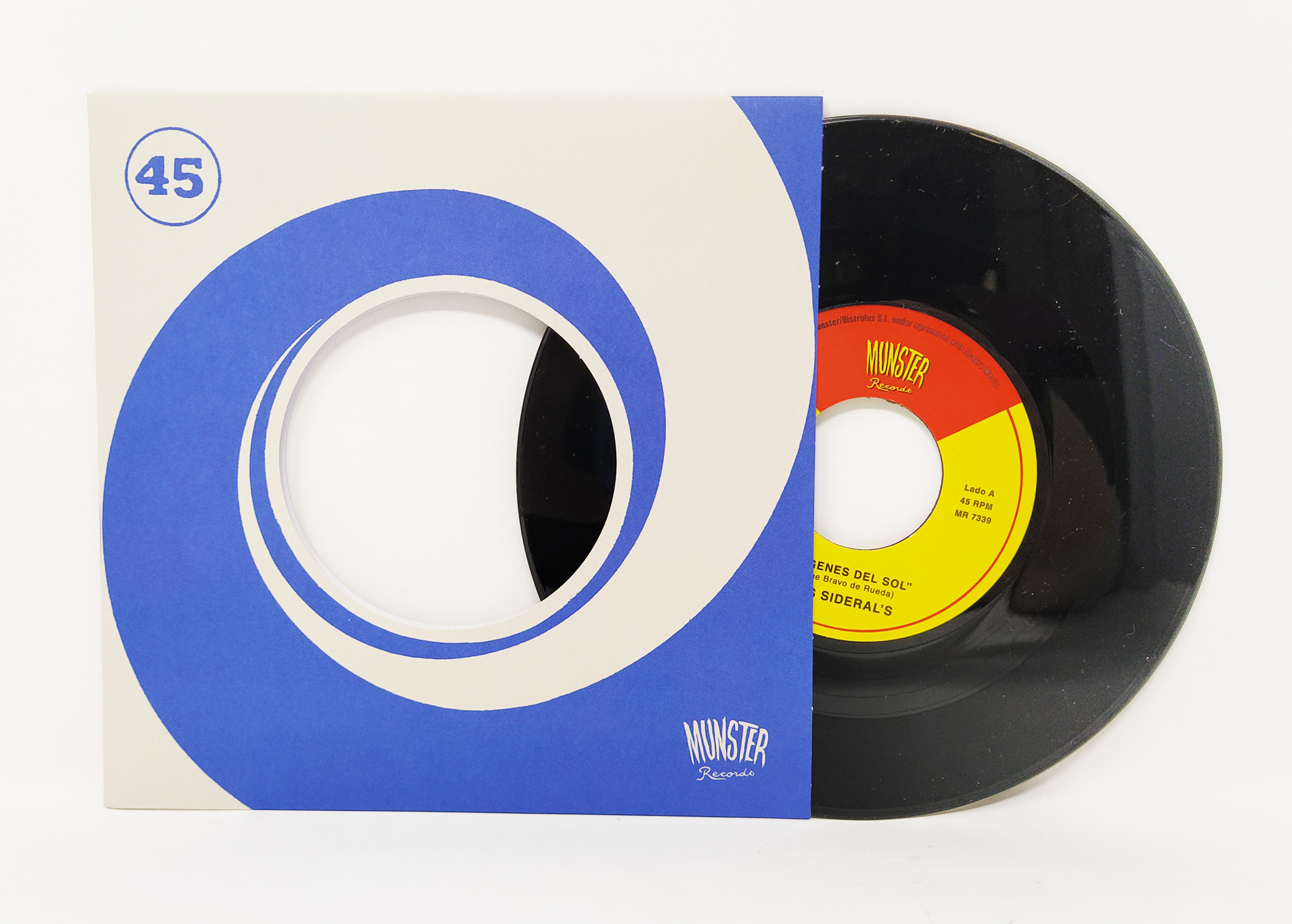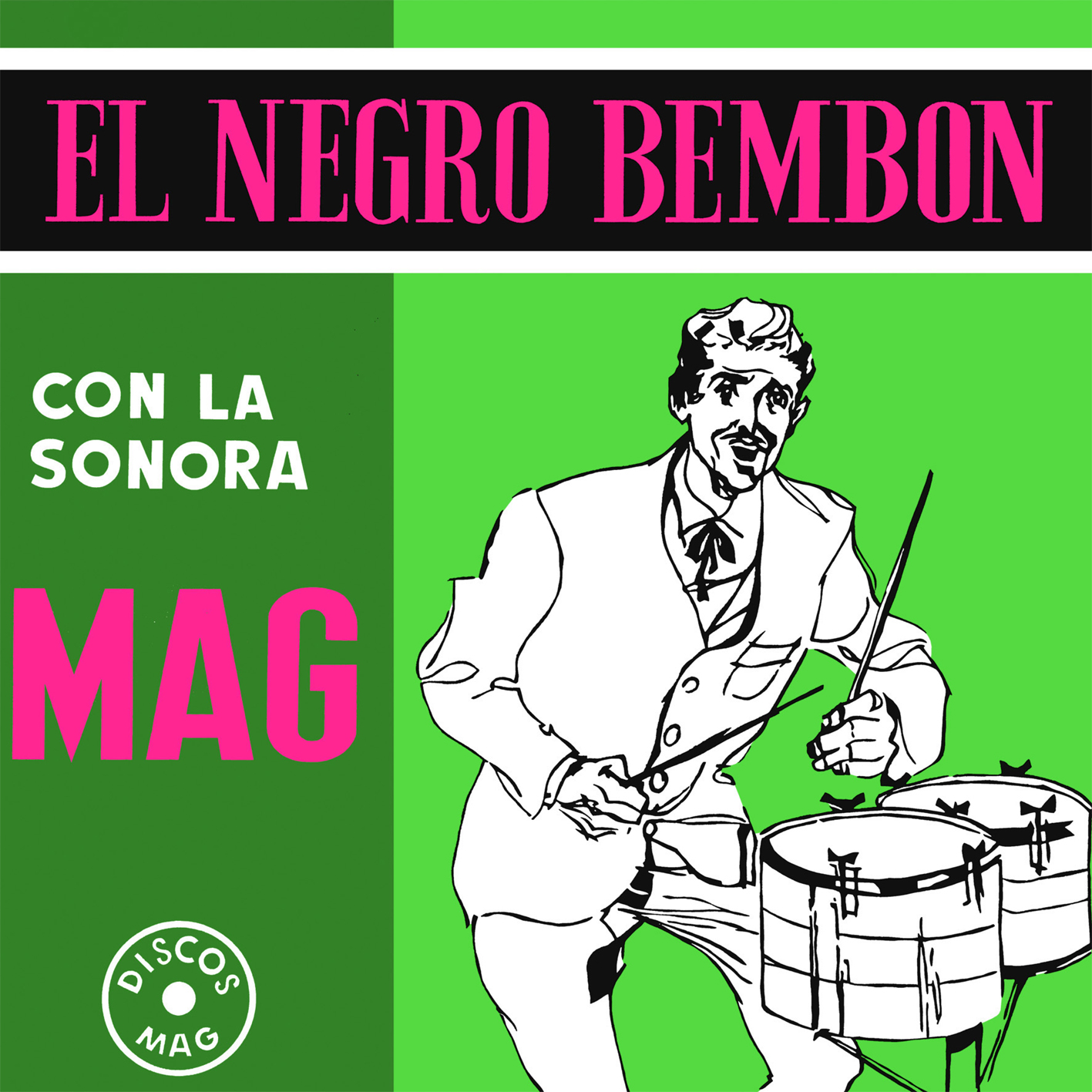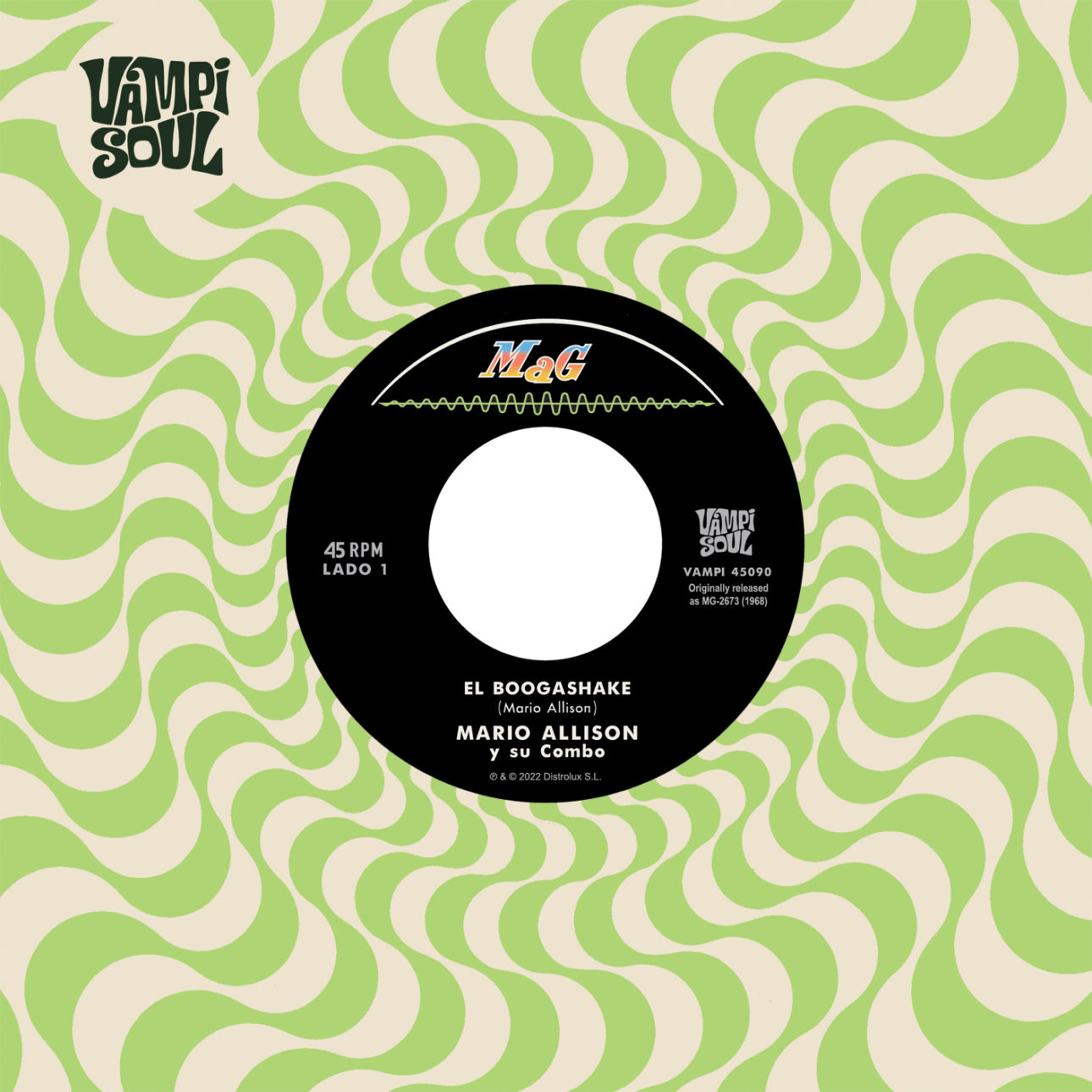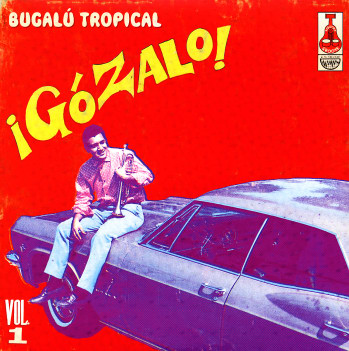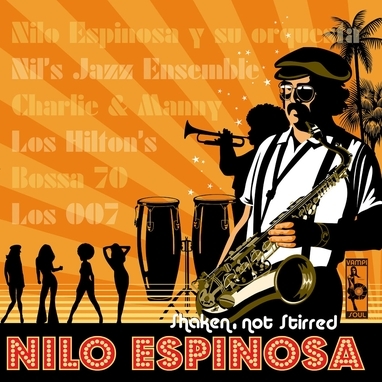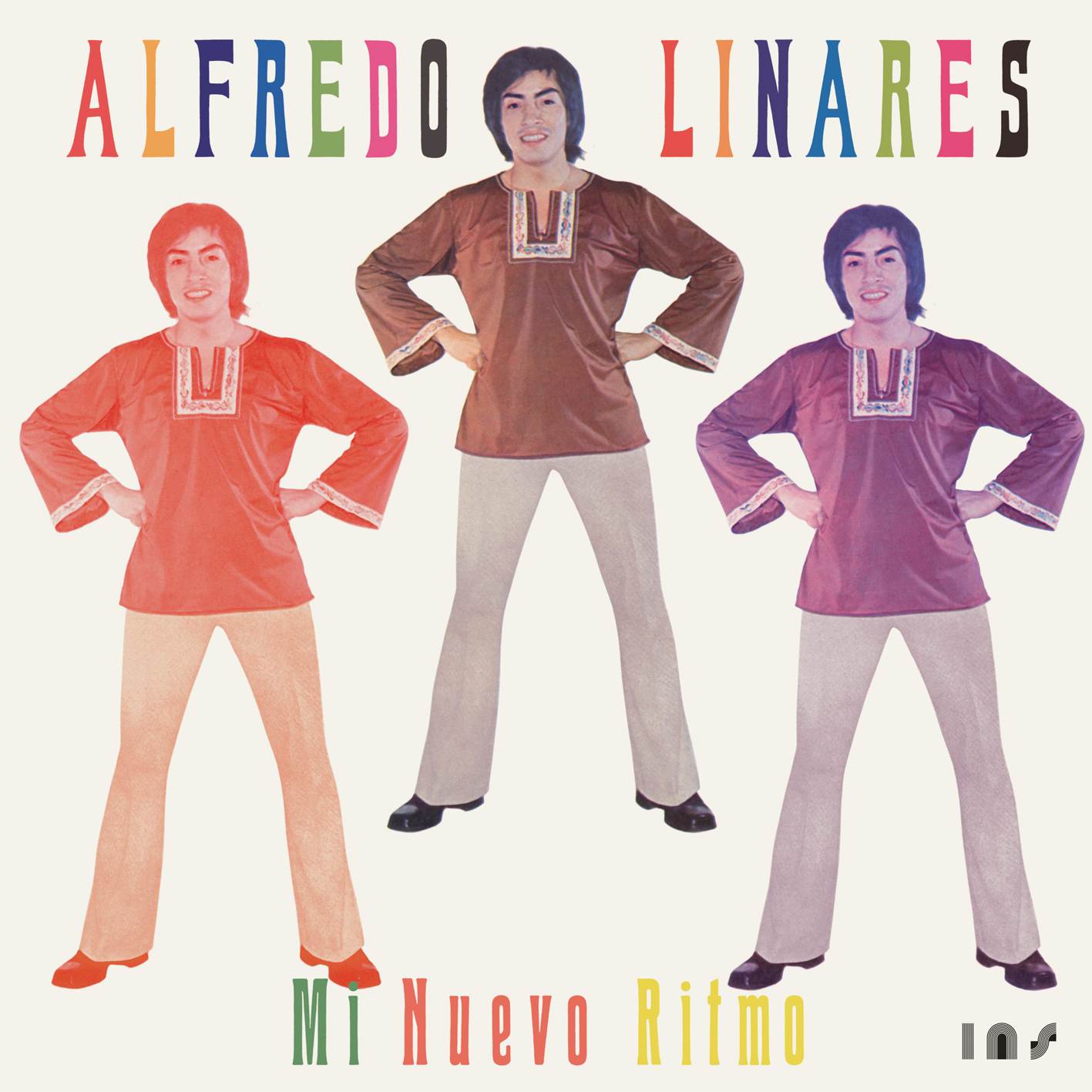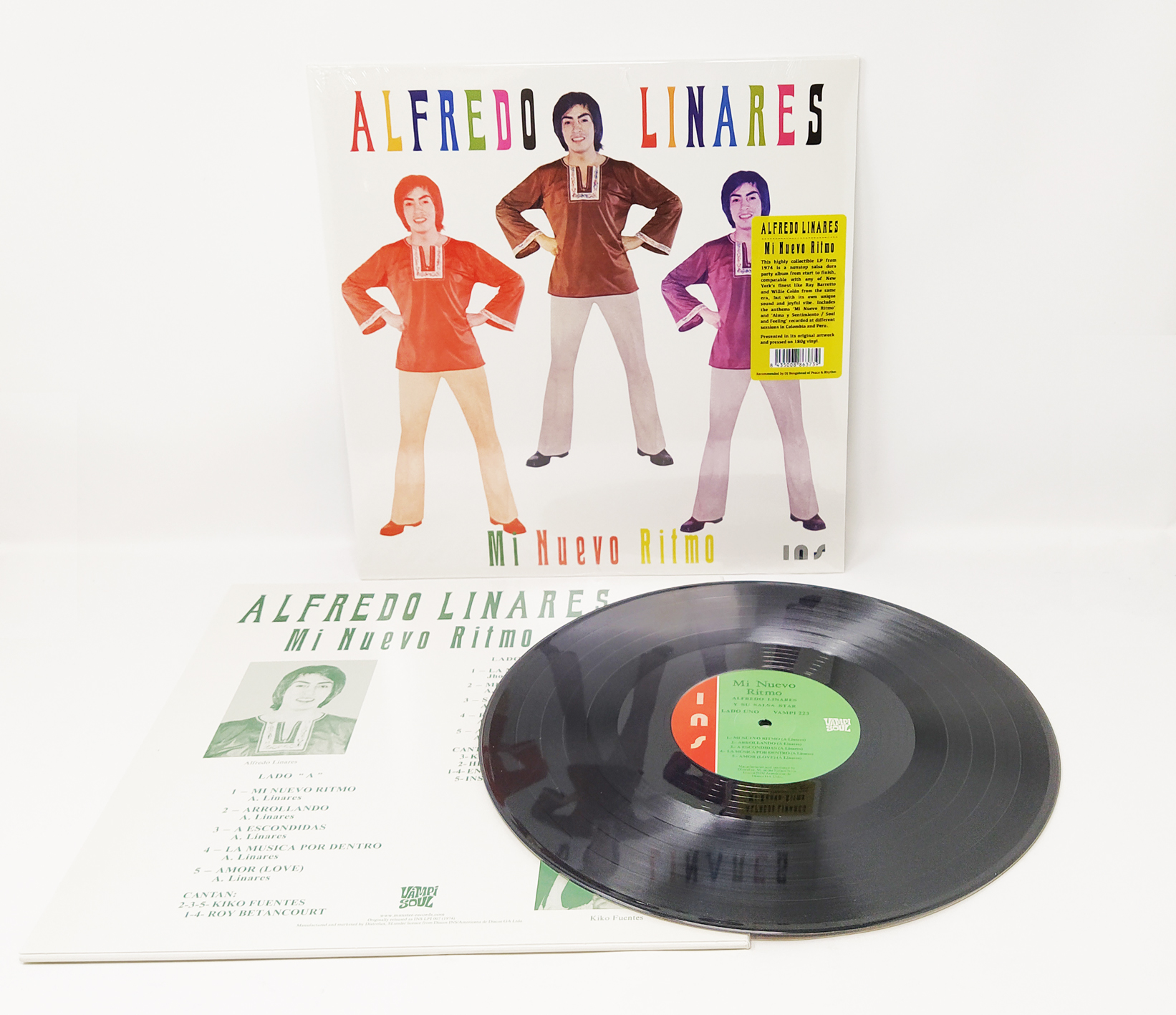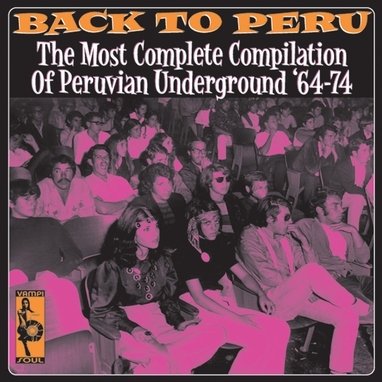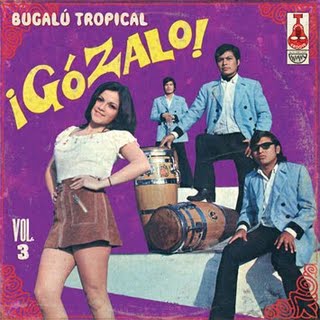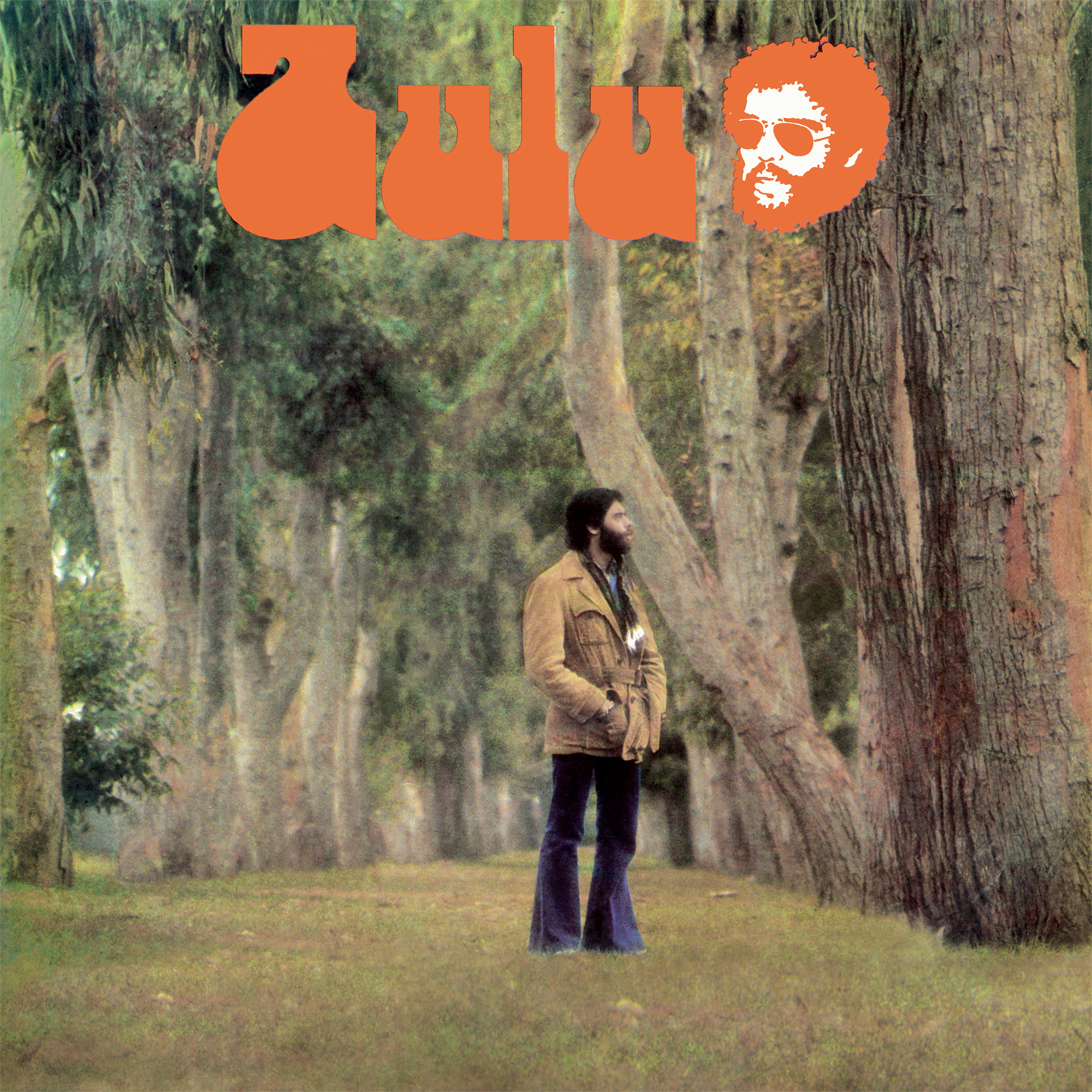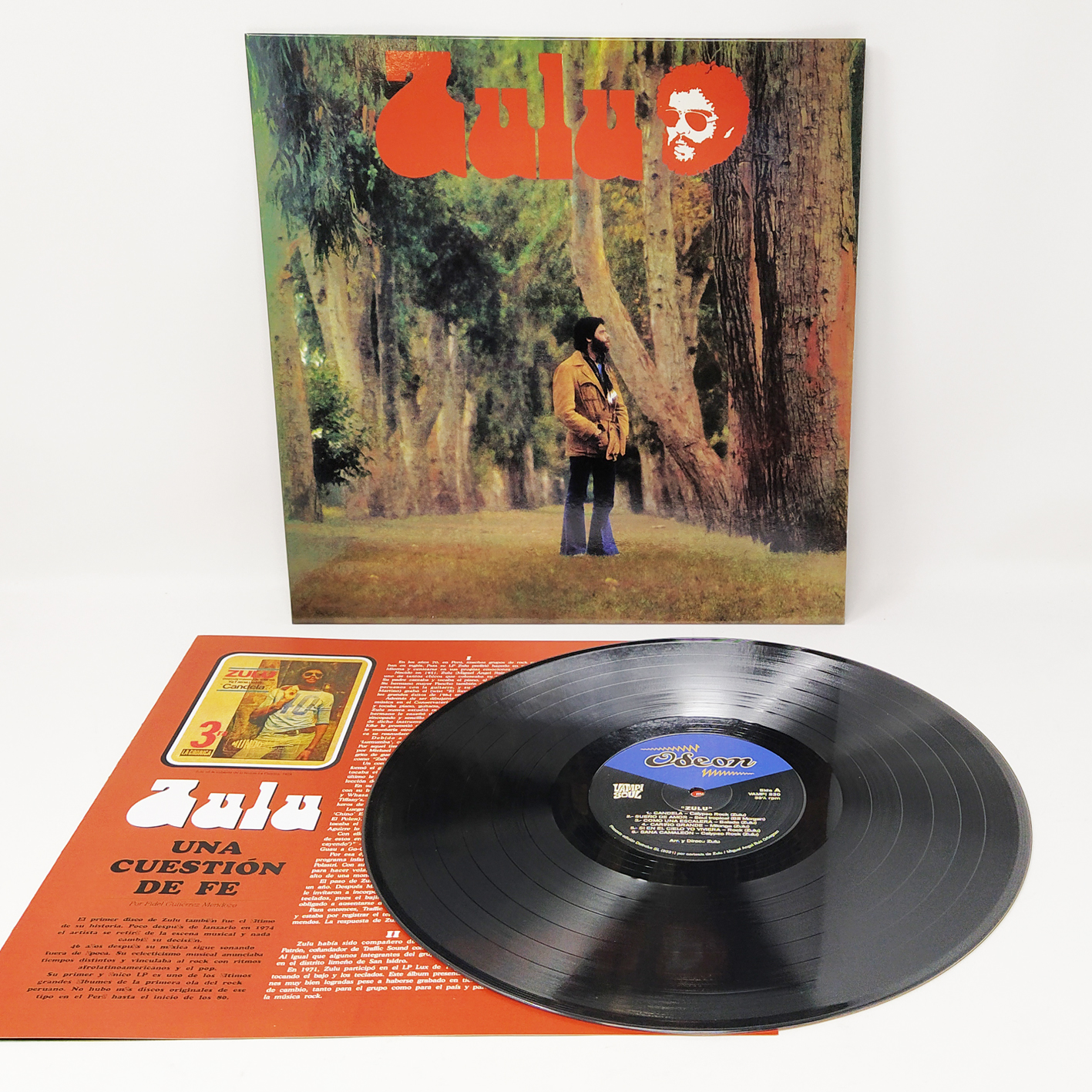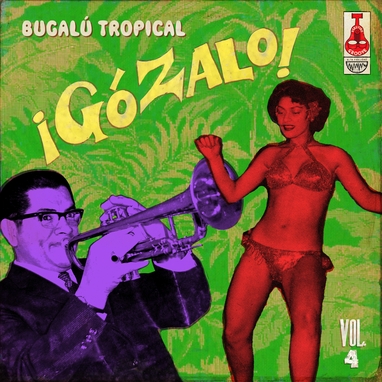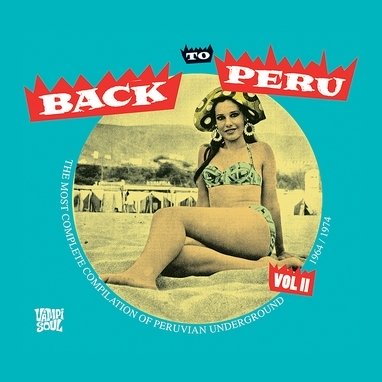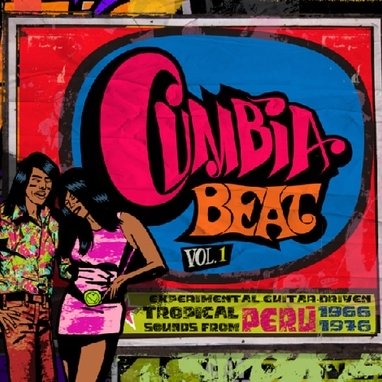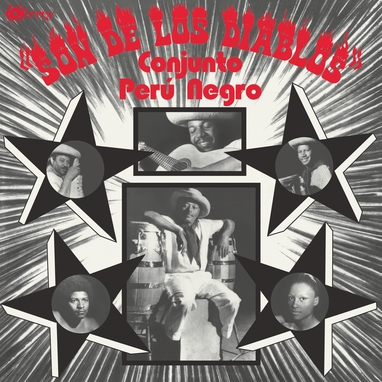Telegraph Avenue
S/T
Telegraph Avenue
S/T
Telegraph Avenue’s debut album shows the highpoint Peruvian rock had reached by 1971, when psychedelic groups like Traffic Sound and Laghonia were bowing out of the scene, and Pax, Tarkus, El Polen and Zulu were picking up the baton with their new projects.
Although this album draws on similar psychedelia and Latin rock sources, its roots are intertwined with the breakup of Los Doltons, a beat band, whose vocalist, César Ichikawa, took a trip to the United States at the beginning of 1969, going to concerts by The Doors, Jefferson Airplane, Santana and Jimi Hendrix among many others.
The album was an immediate hit and was sold all over Peru thanks to the band’s constant touring outside Lima and the LP’s striking cover design. All the songs on the album are so strong that were released as singles.
The story of Telegraph Avenue, the Peruvian band whose name takes us back to the countercultural San Francisco of the sixties, began with guitarist, vocalist and composer Bo Ichikawa’s journey of initiation to the United States in 1969. After attending many live shows of rock stars, including the emerging Latin artist Carlos Santana, Bo returned to Peru at the end of 1969 to form Telegraph Avenue with friends.
They performed a repertoire that mixed the main branches of psychedelia with the novel Latin sounds of Santana. Thanks to their performances in discotheques, parties, school celebrations, festivals and across different regions of the country, including the historic Pop Festival in Lima where they played alongside Traffic Sound and El Polen in the style of the Woodstock movie, they quickly gained a devoted audience.
This success led them to the MAG record label, where they began to record the eight songs on their debut album with lyrics in English, but which fans were very familiar with as they were part of the band’s usual repertoire at gigs.
Delays in MAG’s production probably led to Manuel Guerrero, owner of the label, rushing the final mixing which was completed without the band’s approval while they traveled to play in Cusco. In fact, they only found out about the release when they heard ‘Something Going’ playing on the radio back in Lima.
Their 1971 debut LP sold out in days thanks to the band’s constant touring outside Lima and the LP’s striking cover design. All the songs on the album are so strong that were released as singles and several more were left on the back burner, forming part of Telegraph Avenue’s next LP.
Despite the success of the album the group disbanded soon after.
Productos relacionados
21,00€
Telegraph Avenue’s debut album shows the highpoint Peruvian rock had reached by 1971, when psychedelic groups like Traffic Sound and Laghonia were bowing out of the scene, and Pax, Tarkus, El Polen and Zulu were picking up the baton with their new projects.
Although this album draws on similar psychedelia and Latin rock sources, its roots are intertwined with the breakup of Los Doltons, a beat band, whose vocalist, César Ichikawa, took a trip to the United States at the beginning of 1969, going to concerts by The Doors, Jefferson Airplane, Santana and Jimi Hendrix among many others.
The album was an immediate hit and was sold all over Peru thanks to the band’s constant touring outside Lima and the LP’s striking cover design. All the songs on the album are so strong that were released as singles.
The story of Telegraph Avenue, the Peruvian band whose name takes us back to the countercultural San Francisco of the sixties, began with guitarist, vocalist and composer Bo Ichikawa’s journey of initiation to the United States in 1969. After attending many live shows of rock stars, including the emerging Latin artist Carlos Santana, Bo returned to Peru at the end of 1969 to form Telegraph Avenue with friends.
They performed a repertoire that mixed the main branches of psychedelia with the novel Latin sounds of Santana. Thanks to their performances in discotheques, parties, school celebrations, festivals and across different regions of the country, including the historic Pop Festival in Lima where they played alongside Traffic Sound and El Polen in the style of the Woodstock movie, they quickly gained a devoted audience.
This success led them to the MAG record label, where they began to record the eight songs on their debut album with lyrics in English, but which fans were very familiar with as they were part of the band’s usual repertoire at gigs.
Delays in MAG’s production probably led to Manuel Guerrero, owner of the label, rushing the final mixing which was completed without the band’s approval while they traveled to play in Cusco. In fact, they only found out about the release when they heard ‘Something Going’ playing on the radio back in Lima.
Their 1971 debut LP sold out in days thanks to the band’s constant touring outside Lima and the LP’s striking cover design. All the songs on the album are so strong that were released as singles and several more were left on the back burner, forming part of Telegraph Avenue’s next LP.
Despite the success of the album the group disbanded soon after.
Productos relacionados
S/T
Telegraph Avenue’s debut album shows the highpoint Peruvian rock had reached by 1971, when psychedelic groups like Traffic Sound and Laghonia were bowing out of the scene, and Pax, Tarkus, El Polen and Zulu were picking up the baton with their new projects.
Although this album draws on similar psychedelia and Latin rock sources, its roots are intertwined with the breakup of Los Doltons, a beat band, whose vocalist, César Ichikawa, took a trip to the United States at the beginning of 1969, going to concerts by The Doors, Jefferson Airplane, Santana and Jimi Hendrix among many others.
The album was an immediate hit and was sold all over Peru thanks to the band’s constant touring outside Lima and the LP’s striking cover design. All the songs on the album are so strong that were released as singles.
The story of Telegraph Avenue, the Peruvian band whose name takes us back to the countercultural San Francisco of the sixties, began with guitarist, vocalist and composer Bo Ichikawa’s journey of initiation to the United States in 1969. After attending many live shows of rock stars, including the emerging Latin artist Carlos Santana, Bo returned to Peru at the end of 1969 to form Telegraph Avenue with friends.
They performed a repertoire that mixed the main branches of psychedelia with the novel Latin sounds of Santana. Thanks to their performances in discotheques, parties, school celebrations, festivals and across different regions of the country, including the historic Pop Festival in Lima where they played alongside Traffic Sound and El Polen in the style of the Woodstock movie, they quickly gained a devoted audience.
This success led them to the MAG record label, where they began to record the eight songs on their debut album with lyrics in English, but which fans were very familiar with as they were part of the band’s usual repertoire at gigs.
Delays in MAG’s production probably led to Manuel Guerrero, owner of the label, rushing the final mixing which was completed without the band’s approval while they traveled to play in Cusco. In fact, they only found out about the release when they heard ‘Something Going’ playing on the radio back in Lima.
Their 1971 debut LP sold out in days thanks to the band’s constant touring outside Lima and the LP’s striking cover design. All the songs on the album are so strong that were released as singles and several more were left on the back burner, forming part of Telegraph Avenue’s next LP.
Despite the success of the album the group disbanded soon after.
Telegraph Avenue
S/T
Telegraph Avenue’s debut album shows the highpoint Peruvian rock had reached by 1971, when psychedelic groups like Traffic Sound and Laghonia were bowing out of the scene, and Pax, Tarkus, El Polen and Zulu were picking up the baton with their new projects.
Although this album draws on similar psychedelia and Latin rock sources, its roots are intertwined with the breakup of Los Doltons, a beat band, whose vocalist, César Ichikawa, took a trip to the United States at the beginning of 1969, going to concerts by The Doors, Jefferson Airplane, Santana and Jimi Hendrix among many others.
The album was an immediate hit and was sold all over Peru thanks to the band’s constant touring outside Lima and the LP’s striking cover design. All the songs on the album are so strong that were released as singles.
The story of Telegraph Avenue, the Peruvian band whose name takes us back to the countercultural San Francisco of the sixties, began with guitarist, vocalist and composer Bo Ichikawa’s journey of initiation to the United States in 1969. After attending many live shows of rock stars, including the emerging Latin artist Carlos Santana, Bo returned to Peru at the end of 1969 to form Telegraph Avenue with friends.
They performed a repertoire that mixed the main branches of psychedelia with the novel Latin sounds of Santana. Thanks to their performances in discotheques, parties, school celebrations, festivals and across different regions of the country, including the historic Pop Festival in Lima where they played alongside Traffic Sound and El Polen in the style of the Woodstock movie, they quickly gained a devoted audience.
This success led them to the MAG record label, where they began to record the eight songs on their debut album with lyrics in English, but which fans were very familiar with as they were part of the band’s usual repertoire at gigs.
Delays in MAG’s production probably led to Manuel Guerrero, owner of the label, rushing the final mixing which was completed without the band’s approval while they traveled to play in Cusco. In fact, they only found out about the release when they heard ‘Something Going’ playing on the radio back in Lima.
Their 1971 debut LP sold out in days thanks to the band’s constant touring outside Lima and the LP’s striking cover design. All the songs on the album are so strong that were released as singles and several more were left on the back burner, forming part of Telegraph Avenue’s next LP.
Despite the success of the album the group disbanded soon after.

